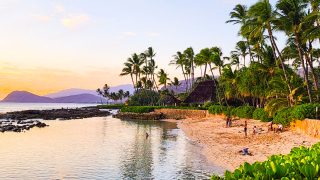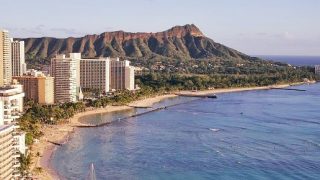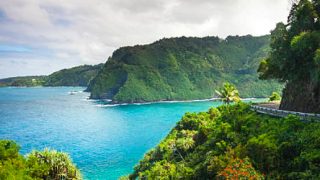There are upcoming challenges associated with over-tourism and what is quickly evolving as the new Hawaii tourism paradigm. Hawaii visitors are ready, poised to return to the islands in record numbers now that Covid is abating. But is that what Hawaii wants? Clearly, how Hawaii manages its burgeoning tourism sector is critical in every way, both for visitors and for residents. The very nature of Hawaii tourism is changing, and here’s what’s going on. Tourism is unquestionably the state’s most important industry and the standalone financial driver for Hawaii.
“The primary source of income for Hawaii is the visitor sector which spreads itself over several industries, such as service, transportation, and retail trade.” — State of Hawaii
What will Hawaii’s “New Tourism Paradigm” look like?
The state’s Hawaii Tourism Authority has said that it wants to encourage visitors who “understand Hawaii to be something unique, special and memorable, and worth investing in terms of a vacation.”
Not only that. Last week, State Representative Sean Quinlan stated that “we don’t want to go back to 11 million visitors a year, we don’t want to do high volume, low spending tourism.”
At every level, and on all the islands, the intent is becoming clear. Fewer visitors, higher spending ones, a wide range of new fees, together with conservation, education, and giving back.
BOH: Changes already proposed and those forthcoming will not be like an on/off switch but instead be progressive. Airlines still have seats to fill, and, with fierce competition, cheap flights to Hawaii remain plentiful. Hotels and other accommodations too have beds to fill. But in time, as more fees and limits are imposed, Hawaii tourism will evolve, and it may happen more quickly than any of us anticipated.
Hawaii tourism: how everything changed with Covid.
Hawaii’s tourism arm is now headed by Hawaii native John De Fries who reminisces about growing up in Waikiki in the 60s. He said of the area, that today it is “a playground surrounded by hotels.” De Fries took over as head of the state’s HTA last fall.
Looking back to the last boom year in Hawaii travel, 2019, we had a record, 10.4 M visitors, who brought in $2.1 B in tax revenue alone that year. At the same time, residents suffered from traffic, crowding in public places, and an extremely high cost of living. For many, the lull of 2020 Covid was, as De Fries well stated, “somewhat euphoric. It felt like we got our islands back.”
The HTA head analogized what has happened since tourism resumed to “putting 220 volts of electricity through a 110-volt circuit.” That given the higher than ever cost of accommodations, exorbitant or unavailable Hawaii rental cars, accommodation taxes at new national records, and more.
Forthcoming plans will transform Hawaii tourism in big and demonstrable ways.
That comes as each of the islands has now developed a strategic plan through 2025 focused not on destination marketing, but rather on sustainable travel management.
From entrance and parking fees to the possibility of regenerative tourism fees, the state is looking at changes that would apply to all arriving tourists in order to support conservation and environmental programs.
“Malama” (giving back) is another concept being woven into Hawaii tourism.
DeFries said that while “everyone relates to aloha, malama is emerging as its sister value.” That might look like helping hawaii to reforest land or cleaning up beaches in exchange for a free hotel night.
Hawaii state parks: visitor fees + reservations required.
Visitor fees, in some cases, pared with educational programs, and tourism capacity limits are ultimately likely to be imposed at all of Hawaii’s state parks. That in an attempt to reduce the number of visitors, improve the sustainability of Hawaii’s natural resources, and help fund the parks.
Some of the changes that have already occurred include multiple fees and reservation requirements at some of the most significant Hawaii visitor destinations.
1. North Shore Kauai’s Haena State Park, gateway to the famed Kalalau Trail.
2. Maui’s Wainapanapa State Park, home of an exquisite black sand beach.
3. Oahu’s renowned Hanauma Bay Nature Preserve.
Vacation rental “Green Fees?”
The state research arm at the University of Hawaii recently wrote about a proposed “green fee surcharge of $20 for each guest, either a visitor or resident, of a transient accommodation.” While that proposal died in committee, the concept is destined to return in some form.
Big Island and Kauai consider new visitor fees.
Last week, the Big Island’s mayor said he is considering new fees for county beaches in order to help defray costs. The discussion will continue. User fees for Big Island county parks were first brought forward in 2019 but have thus far not been implemented. Will the fees only be applied to visitors?
On Kauai, visitor fees for county parks are currently being considered. When we wrote Should Visitors Pay New $10 Kauai Beach Parking Surcharge last month, you were outspoken in nearly 300 fascinating comments.
Information and education are other new aspects of Hawaii tourism.
This is just in its infancy. We recall the first time we had to watch a mandatory video prior to visiting the USS Arizona at Pearl Harbor. Hawaiian Airlines too offers an educational video focused on sustainability and safety. It is associated with ocean precautions, where visitors are ten times more likely to drown than residents, as well as on Hawaiian monk seals and other endangered species, and on sunscreens that are reef-sale.
Broader Hawaii conservation/green fees could be the next big change.
The concept of some form of regenerative tourism fee is being widely discussed, both on Oahu, and statewide. Such fees could be imposed on all visitors in order to support environmental management and conservation.
Hawaii will attempt to implement something similar to what other tourist destinations have done previously. One such place is the Galapagos Islands.
There, all arriving visitors are required to pay an entry tax in order to visit. The amount of this entrance fee is currently $100 for visitors and $6 for Ecuadoreans, but a doubling of that fee is being planned.
Hawaii’s research arm also said, “the small Pacific island nation of Palau has one of the most effective green fee programs in the world, a US$100 visitor fee embedded into airline tickets.” Hawaii’s first failed attempt sought to assess a $40 fee to provide funding that supports Hawaii’s natural resources and ecosystems.







This significantly reducing Hawaiian tourism idea with higher taxes and fees will most likely come to a crashing halt when the bean counters figure out what the state’s annual revenue losses will be and then calculate the inevitable tax/fee increases on residents to compensate.
Hawaii’s residents and politicians will then have to chose their poison. Taxes or tourist.
“Rule No. 1: Never lose money. Rule No. 2: Never forget Rule No. 1” — Warren Buffett
Looks like you want to change Hawaii into Martha’s vineyard, where only the rich can afford to go. Be careful of what you wish for!
Lawrence,
Not to worry. The rich will still have their slave servants who don’t get to share in the riches.
I don’t get it, some folks seem to believe the rich tourists will come, en masse, and wash away all of Hawaii’s troubles.
Thank you for the updates. Unfortunately this may stop many people from touring the islands moving forward because they can’t afford the additional cost for every family member that is in their household. Budget determines where folks can and will go. This may cause Hawaii to loose money from visitors choosing not to go somewhere where they will be nickled and dimed for everything on vacation
Where do all the fees go? That’s what I want to know. Can we get a breakdown of where the new fees go?
With proposals to make HI a high price destination, how will this affect local people and their businesses. Elites will stay at spa resorts, eat in high end restaurants and experience tricked out excursions. Employees aren’t paid better by high end employers.
Will this improve the cost of housing, jobs and wages by magical trickle down economy? I don’t see taxes and fees addressing those problems.
I get a kick out of the near worship of native Hawaiians. As though they were Gods of the land. They are just like the tourists. Good, bad, responsible with the environment, not so responsible. Some are bad, some pick up others trash.
A lot of talk, I don’t notice the difference.
This
But I’m a haole so what do I know
You don’t have an appreciation of native cultures.
Most fees are just absorbed into a government black hole. It’s a tax the democrats love to impose. Look at the rail project.
I would agree to a charge if they are transparent of where the money goes. Remember, if you charge, you better deliver. Maybe more security at Ala Moana parking or at Diamond head. Getting busted windows is never fun.
I am a citigen of the usa. That means I have the freedom to travel in all the states. You do not own the power to dictate how I have to live. I have been there 8 times and stayed with family in Ewa beach. So I dont care what stupid rules you come up with. I will go to the beach just like always. It is just a short walk from ocean point. Just remember we have lots of freedom and beaches in Florida.
To John H: I’m saddened that this yours is the first remark to this thoughtfully presented piece. There is no reason to be angry…do you have ideas to address the very real problem of over tourism in Hawaii? Something has to give.
Yes, let’s add fees and entry fees, then only those with money can visit, what I have noticed is that those with money are the most irresponsible. There must be a more logical solution, just need more brain storming.
The biggest concern for me are the rising nightly state occupancy taxes charged to timeshare owners.I know & agree we all need to pay taxes to support government services but timeshare owners pay taxes through our maintenance fees & now nightly when we use our timeshares in Hawaii. The newest increase was very noticeable when I checked out last December after 12 weeks.Not sure a lot of people can take much more in the wallet.I hope the government will reconsider like CA did.
Fine, stay in Florida!